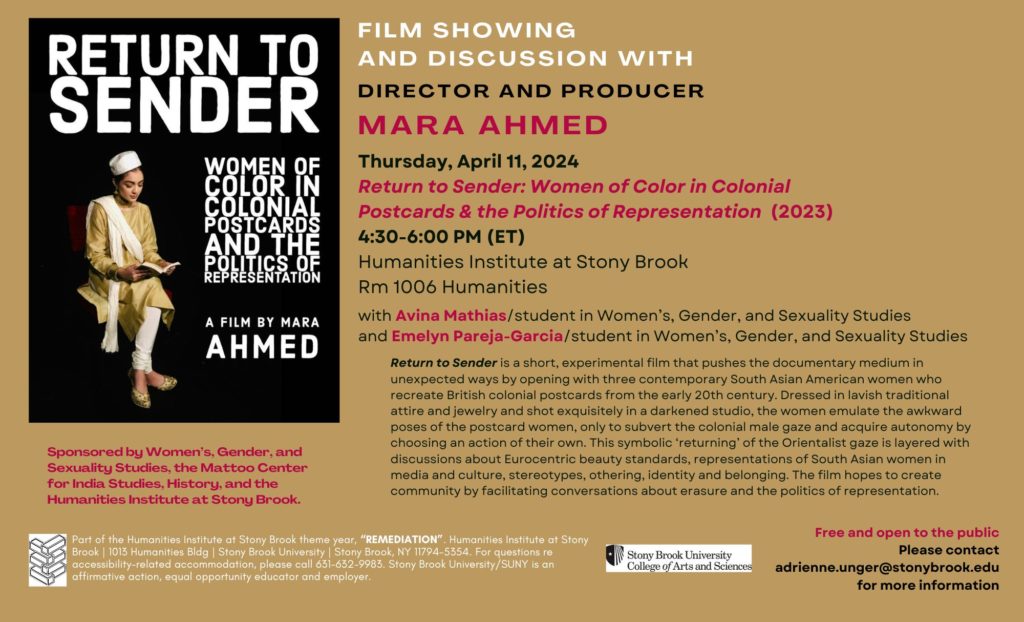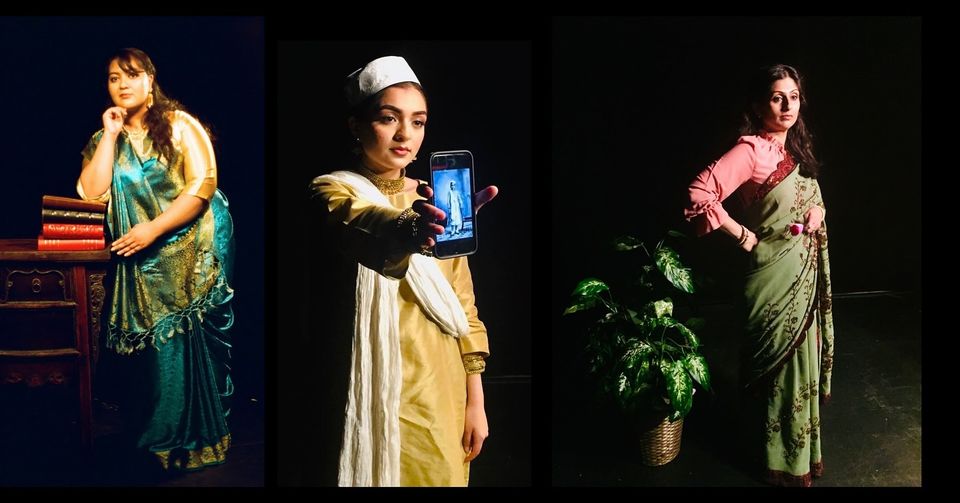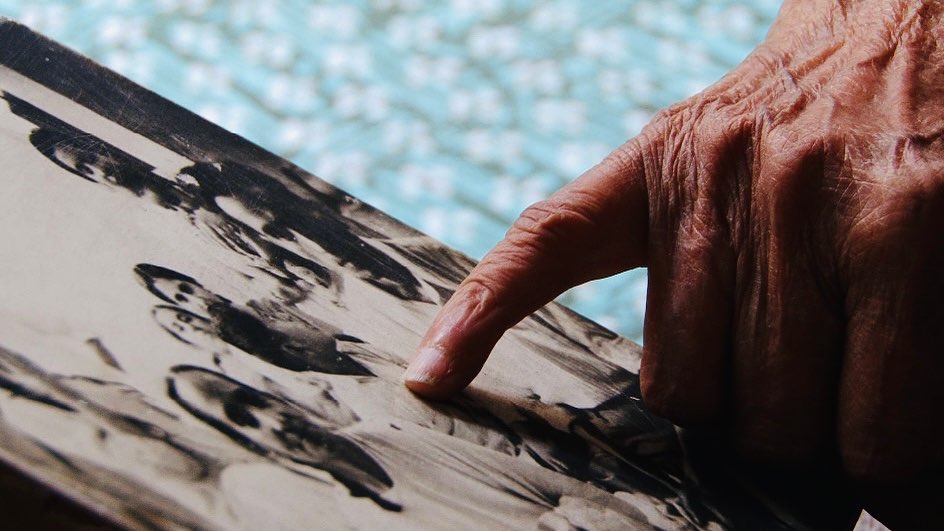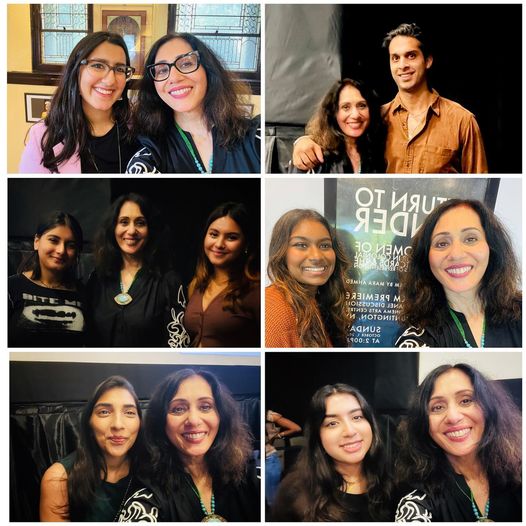Return to Sender: Women of Color in Colonial Postcards & the Politics of Representation is coming to Rochester, New York, on May 4th at 12pm.
The screening will be followed by a panelist discussion. Seating is limited. You can buy your tickets below.
PROGRAM DETAILS: Come join us for the Rochester premiere of Mara Ahmed’s Return to Sender, an afternoon of film & community discussion at ROC Cinema!
Return to Sender: Women of Color in Colonial Postcards & the Politics of Representation is a short, experimental film directed and produced by Mara Ahmed. This project was funded by a NYSCA grant. It pushes the documentary medium in unexpected ways by opening with three contemporary South Asian American women who recreate British colonial postcards from the early 20th century. Dressed in lavish traditional attire and jewelry and shot exquisitely in a darkened studio, the women emulate the awkward poses of the postcard women, only to subvert the colonial male gaze and acquire autonomy by choosing an action of their own. This symbolic ‘returning’ of the Orientalist gaze is layered with discussions about Eurocentric beauty standards, representations of South Asian women in media and culture, stereotypes, othering, identity and belonging. The film hopes to create community by facilitating conversations about erasure and the politics of representation.
Join us for an afternoon of movie magic at ROC Cinema. You will be transported into a world of early 20th century postcards and all the conversations they provoke. Be part of the discussion with panelists Urvashi Bhattacharya, Hernease Davis and Sumayia Islam, as well as Director Mara Ahmed. Don’t miss out on this exclusive event – mark your calendars now! See you there!
DATE: Saturday, May 4, 12:00 – 2:00 PM
VENUE: ROC Cinema (957 S Clinton Avenue, Rochester, NY 14620) is a luxury theater featuring the latest food trends, drinks, and first class entertainment. You’ll have an electrifying night, while watching a movie.
PANELISTS: Learn more about panelists Hernease Davis, Urvashi Bhattacharya and Sumayia Islam here.
FILM REVIEW: Read Cathy Salibian’s brilliant film review in the Rochester Beacon here.
















